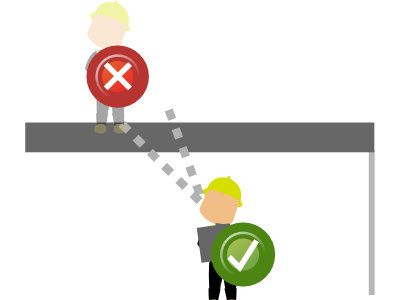Dont' turn a blind eye
- be safe when working at height.
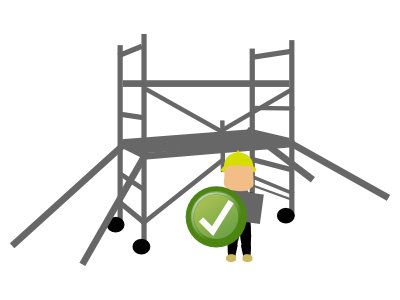 Live edge working (LEW) is an aspect of working at height (WAH).
Live edge working (LEW) is an aspect of working at height (WAH).
In recent months there has been increased scrutiny on LEW and temporary edge protection (TEP) by H&S professionals within our sector.
The reason for this scrutiny is due an increase, albeit isolated incidents, in practices that have been deemed unsafe and not meeting minimum levels of guidance or H&S regulation. In addition, it has also been recorded that concerns regarding behaviour and attitudes towards safe working in a live edge environment have caused concern.
As a sector we have a choice to make in these situations.
We can turn a blind eye to isolated incidents of poor practice or move to stamp it out and protect and enhance the reputation of contractors who work in the correct manner.
Choosing the latter keeps our industry in control of its practices and prevents also prevents knee jerk reaction from other sectors of the exhibition world who may be forced to impose overzealous working practices on contractors in order to safeguard and reassure themselves these isolated incident won’t happen again.
Avoid Working at Height
- can the job be done at ground level?
Can the job or aspects thereof be brought to ground level?
Design out risk and design in good practice
Good design is important when considering LEW and TEP. This includes consideration of the structures to be built, time available to build, the layout of the floor plan to allow space for access and safe working and the design of the task itself.
- Can the need to work at height be removed? Thus avoiding LEW.
- Can materials that are easier to handle be specified? e.g. lighter weight components
- Consider the work process and the equipment required for heavy lifting.
- Can edge protection or other features that increase the safety of access and construction be designed and installed?
- Can anchor points for installation of life-line or safety harnesses be mounted where work platforms cannot be installed?
- Can floor openings, if any, be minimised?
- Can adverse weather conditions affect the ability to safely construct e.g. rain or wind during work on outdoor structures?
- Can there be early installation of access to 2nd storey, such as stairs, to reduce the use of ladders or scaffolds?
Safety whilst working at height starts with skilled design and finishes with professional build and dismantle, hence this advisory document provides information and guidance for these two distinct areas
Live Edge Protection (LEP)

Wherever anyone could fall, the first line of defence is to provide adequate edge protection to prevent a fall occurring.
This should be equivalent to:
- a main guard rail at least 950 mm above the edge
- a toe board where there is risk of objects being kicked off the edge of the platform
- a suitable number of intermediate guard rails or suitable alternatives positioned so that there is no gap more than 470 mm.
Work Platforms
 As well as edge protection, it is just as important to provide an adequate and secure working platform from which to carry out the work. If appropriate, a MEWP may be suitable for some work where it can be carried out from inside the basket.
As well as edge protection, it is just as important to provide an adequate and secure working platform from which to carry out the work. If appropriate, a MEWP may be suitable for some work where it can be carried out from inside the basket.
Guidance
Guidance on working safely and correctly with both of the above systems can be found within the contractor e-guidance
Fall Mitigation
Providing adequate platforms and edge protection may not always be possible or reasonably practicable. If so, safety nets, soft landing systems or personal fall arrest systems such as harnesses can minimise the consequences of potential injury.
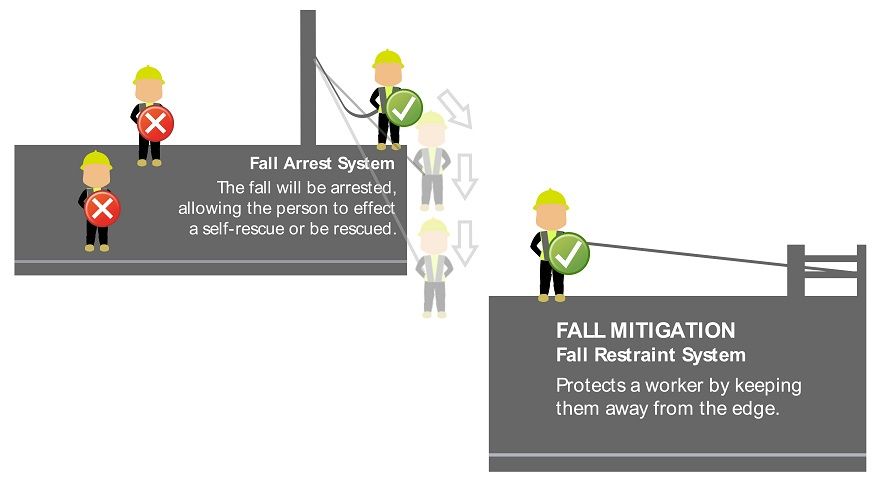
Falling material
Keep a tidy site. Stop material which could fall from accumulating. Never throw anything from a place of work at height.
Materials can be dropped when they are:
- Badly stored near the edge of scaffold platform or on the step of a ladder
- Near gaps in surfaces
- Near open unprotected edges
- Thrown between ground and the work at height.
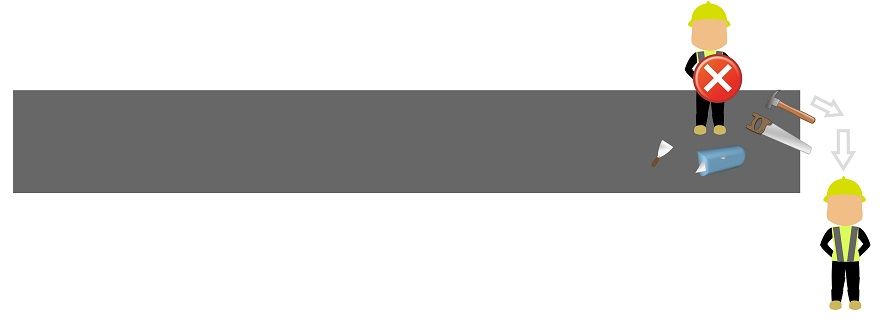
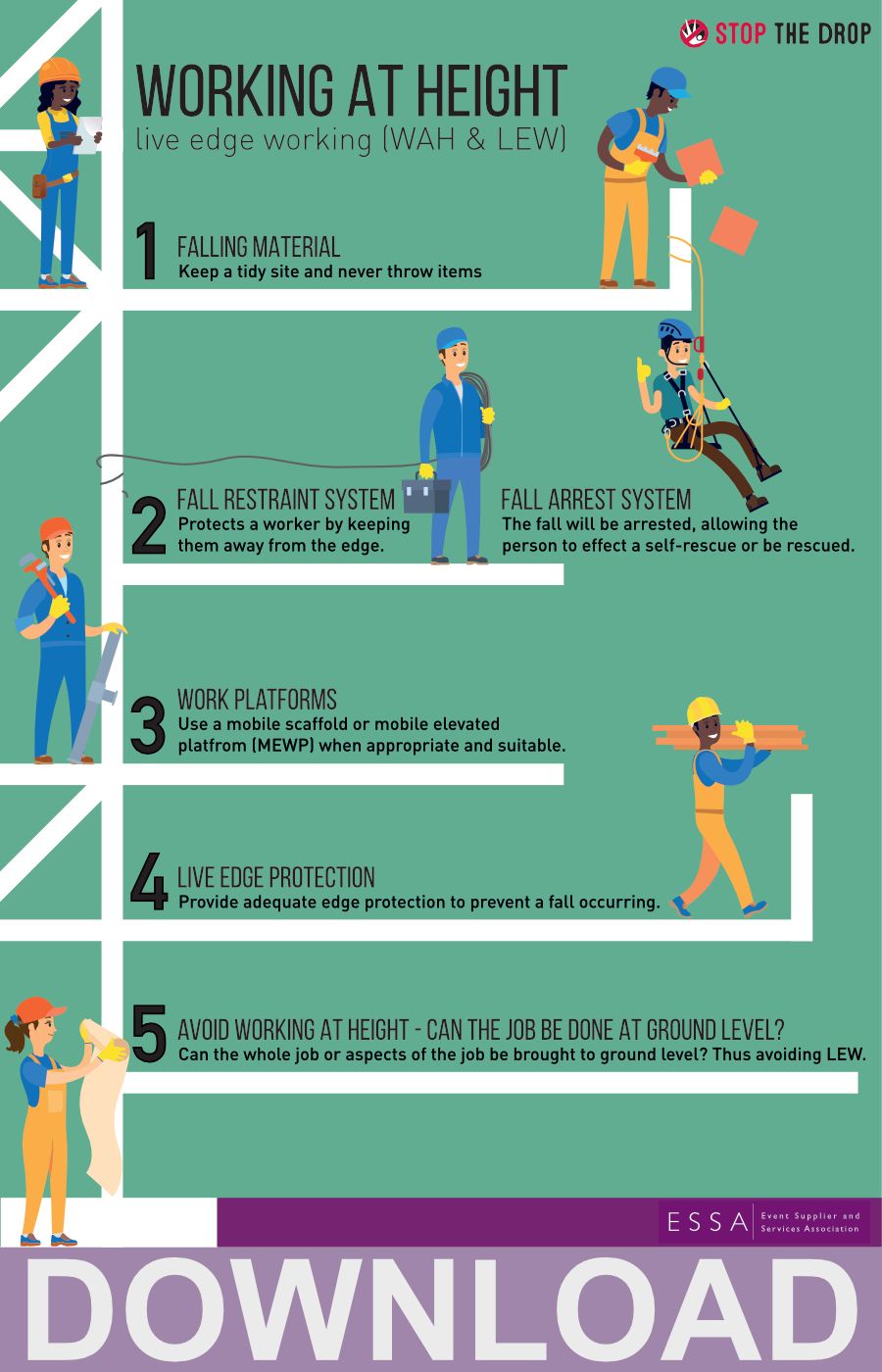 Working at Height
Working at Height
Live edge working (wah & LEW)
Download our 5 steps leaflet
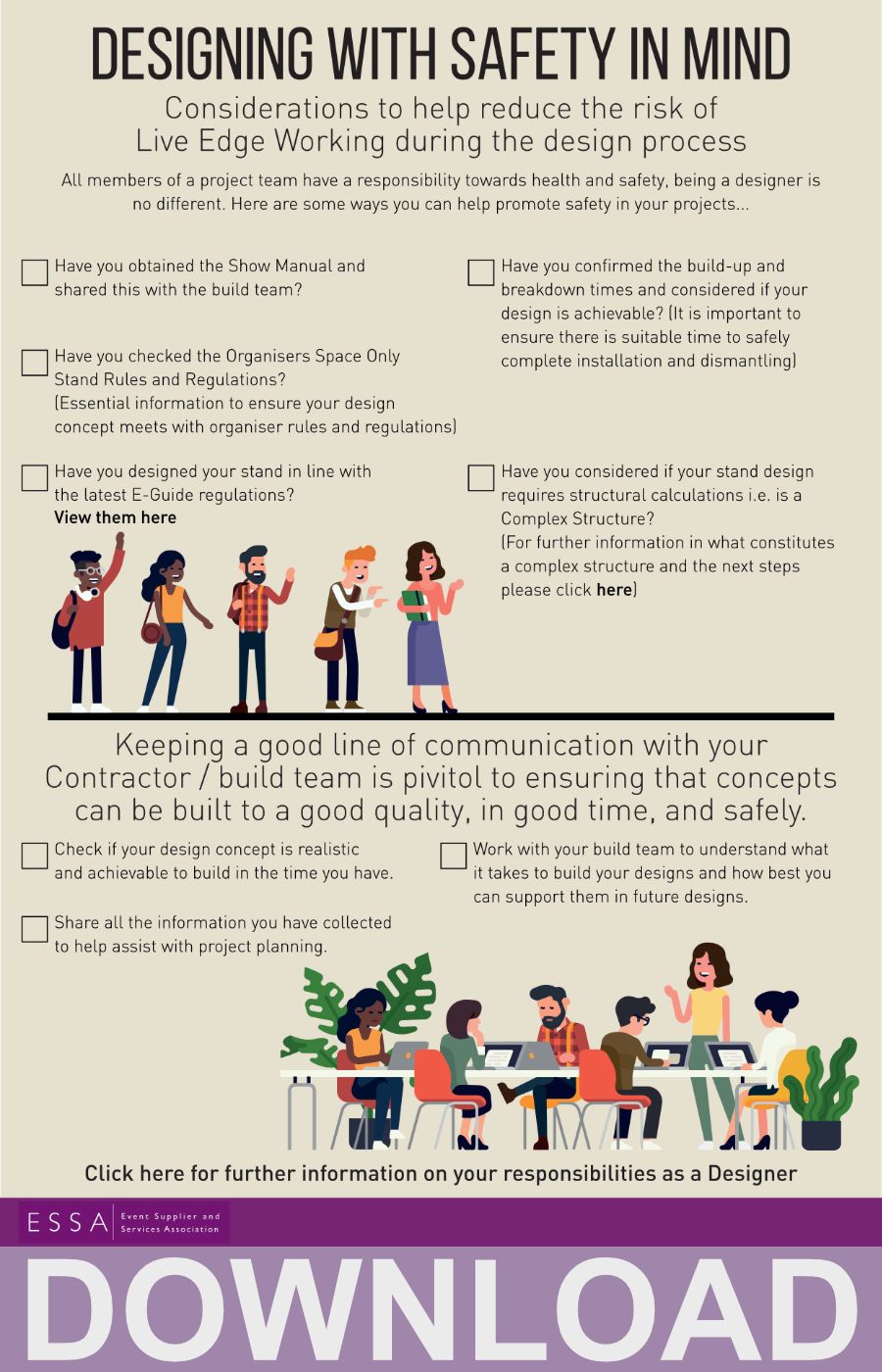 Designing with Safety in Mind
Designing with Safety in Mind
Considerations to help reduce the risk of LEW during the design process
All members of a project team have a responsibillity towards health and safety;
- being a designer is no different.
This leafet outlines some ways you can help promote safety in your projects.
Training
Possibly the single most important area of LEW is training.
LEW requires individuals to have appropriate knowledge, skills, training and experience to work safely, or should be under the supervision of someone else who has it.
They need to be able to recognise the risks, understand the appropriate systems of work and be competent in the skills to carry them out. Such as:
- installing edge protection
- operating a MEWP
- erection of tower scaffolds
- installing and wearing harness systems (including rescue procedures)
Workers need training and experience to achieve these competencies. It is not enough to hope that they will ‘pick up safety on the job.
Useful Links:
Additional Support
Lets not turn a blind eye to poor and unsafe practice
As an industry, we have been challenged to improve our safety, and we must react quickly, enthusiastically and pragmatically. Our associations have been quick to respond. The Event Supplier and Services Association (ESSA), the Association of Event Venues (AEV) and the Association of Event Organiser (AEO) launched the Stop The Drop initiative with a website and marketing campaign, and the mission now is to spread the word far and wide that working safely at height is a matter that requires urgent action.
The website at www.stop-the-drop.co.uk has everything you need to know about safely working at height, whether you’re an exhibitor, contractor, organiser, venue or designer. With a library of essential guidance documents, arranged conveniently for individual audiences, every stakeholder can download the guides and gain an understanding of not just the HSE’s regulations and guidance, but real practical advice on driving down the risk of working at height at every stage of exhibiting. From designing out risk and when to use a ladder instead of a step, to checking the risks of mobile scaffolding, there’s an extensive library of documentation on how to work safely at a height at exhibitions.
Stop falls before they stop you!
We are an amazing industry full of amazing people and a large contributor to this is keeping people safe.
